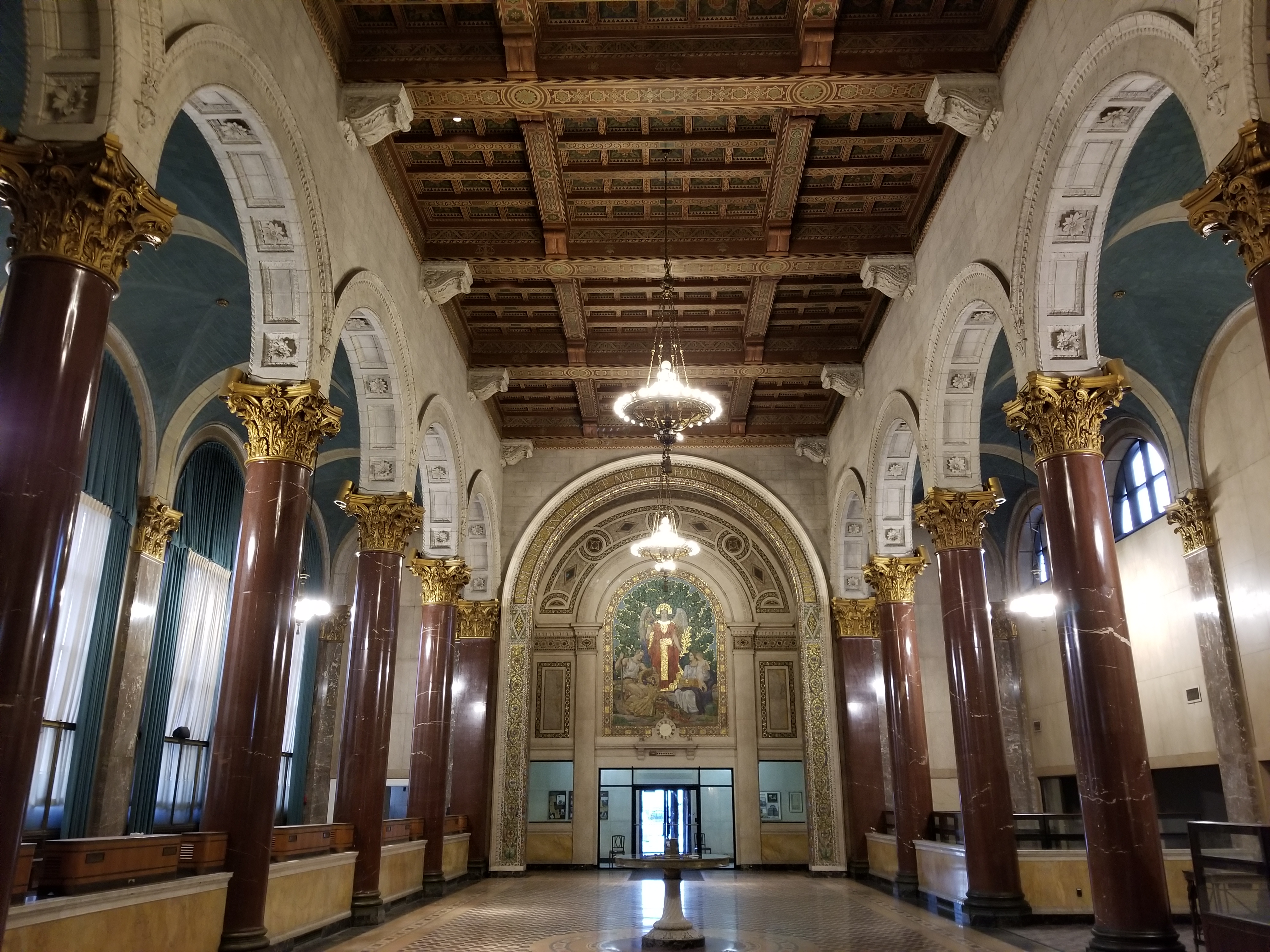The project's three case-study sites are culturally, architecturally, and temporally distinct. Co-organizer Dr. Kolar has led an archaeoacoustics research project at Case Study Site #3, the UNESCO World Heritage Centre archaeological site of Chavín de Huántar, Perú since 2008. These contrasting aural environments challenge the extensibility of our method, and ground the best-practice recommendations we are preparing as a resource for aural heritage preservation and access endeavors.
 Case Study #1: Columbia Studio A, Music Row, Nashville, TN. For a small-room venue with recent historical context, we work to preserve aural heritage from American recording studios in Nashville’s Historic Music Row that have shaped the history of recorded music. In January 2015, the National Trust for Historic Preservation designated Music Row as a “National Treasure,” a highly significant yet threatened historic place. The above photo shows one acoustical measurement setup from our May 2019 data collection session, using a dodecahedral (omnidirectional) loudspeaker for sound sources and several microphones as receivers in a typical room acoustics test configuration.
Case Study #1: Columbia Studio A, Music Row, Nashville, TN. For a small-room venue with recent historical context, we work to preserve aural heritage from American recording studios in Nashville’s Historic Music Row that have shaped the history of recorded music. In January 2015, the National Trust for Historic Preservation designated Music Row as a “National Treasure,” a highly significant yet threatened historic place. The above photo shows one acoustical measurement setup from our May 2019 data collection session, using a dodecahedral (omnidirectional) loudspeaker for sound sources and several microphones as receivers in a typical room acoustics test configuration.
 Case Study #2: Rochester Savings Bank, Rochester, NY. As an example of large and public space acoustics, we will apply the method to the interior of the Rochester Savings Bank located in downtown of Rochester. This 1927 building is listed on the National Register of Historic Places (NRHP), with historical significance for art, architecture and commerce. The above photo shows the ornately decorated main hall, whose coupled volumes and diverse materials create particular acoustical and sensory features.
Case Study #2: Rochester Savings Bank, Rochester, NY. As an example of large and public space acoustics, we will apply the method to the interior of the Rochester Savings Bank located in downtown of Rochester. This 1927 building is listed on the National Register of Historic Places (NRHP), with historical significance for art, architecture and commerce. The above photo shows the ornately decorated main hall, whose coupled volumes and diverse materials create particular acoustical and sensory features.
 Case Study #3: Chavín Interior Architecture, Chavín de Huántar, Ancash, Perú. We address one example of prehistorical archaeological aural heritage in the Americas by focusing on the interior architecture at the 3,000-year-old UNESCO World Heritage Site at Chavín de Huántar, Perú, one of the most extensive examples of well-preserved pre-Columbian architecture. The above photo shows a spaced array of microphones used to make acoustical measurements that represent a locational perspective possible for humans, following the "human-centered" approach to archaeoacoustics developed there.
Case Study #3: Chavín Interior Architecture, Chavín de Huántar, Ancash, Perú. We address one example of prehistorical archaeological aural heritage in the Americas by focusing on the interior architecture at the 3,000-year-old UNESCO World Heritage Site at Chavín de Huántar, Perú, one of the most extensive examples of well-preserved pre-Columbian architecture. The above photo shows a spaced array of microphones used to make acoustical measurements that represent a locational perspective possible for humans, following the "human-centered" approach to archaeoacoustics developed there.